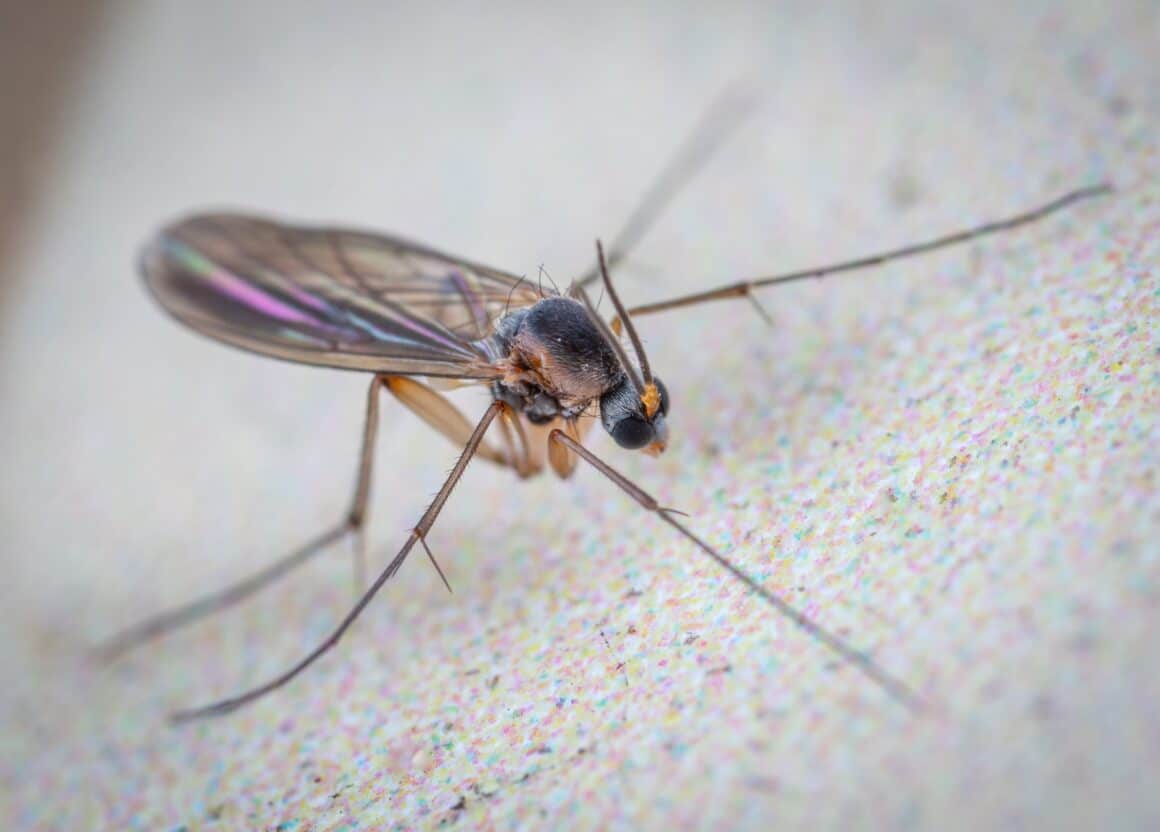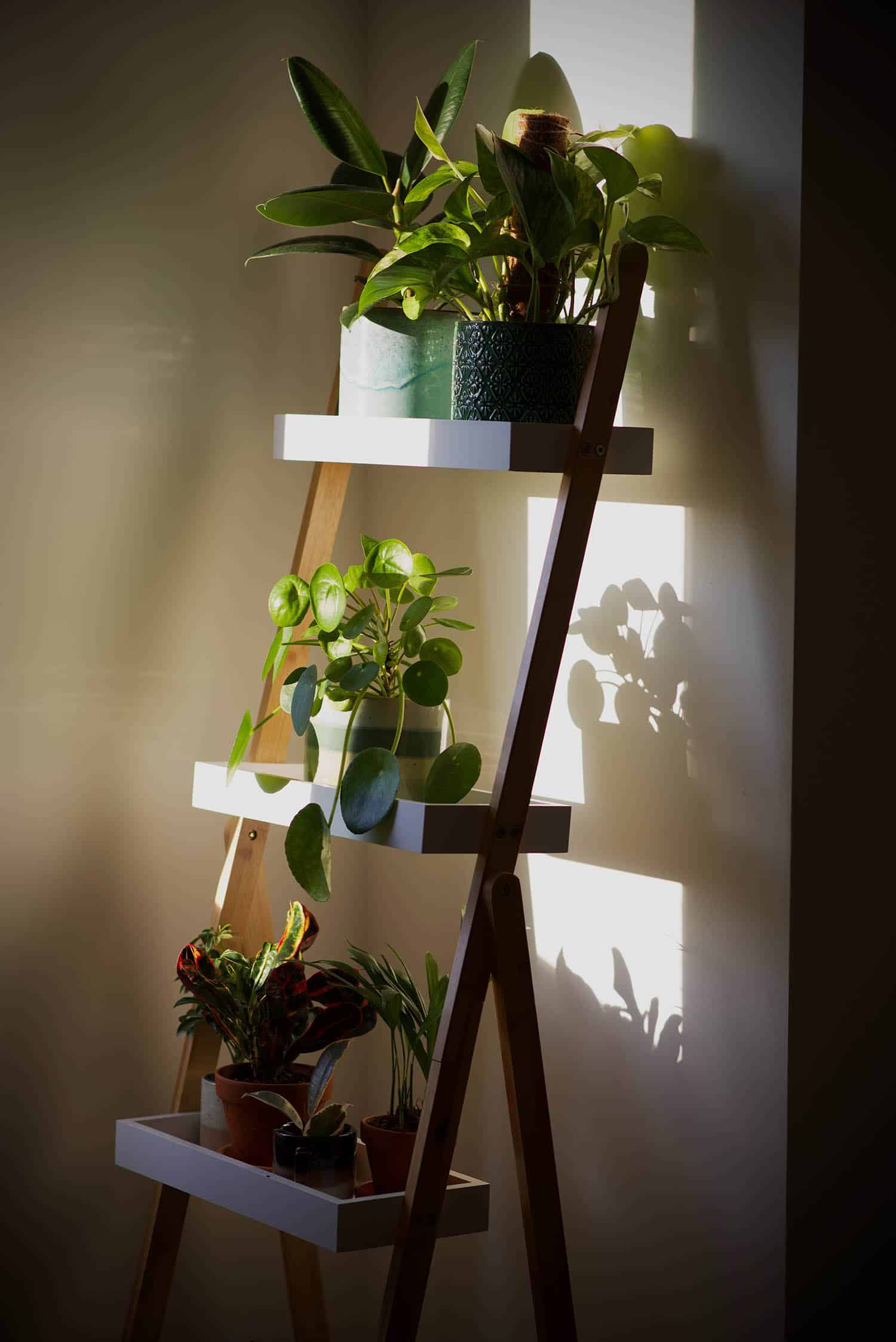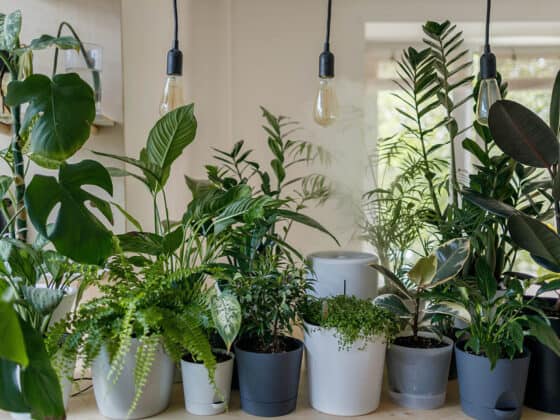As one of the most common pests that take up residence in our houseplants uninvited, it’s no wonder there is a lot of curiosity regarding fungus gnats. What are they? Where did they come from? And probably most importantly, how on earth do you get rid of them?
Fungus gnats are tiny, delicate flies that take up residency in the potting soil of houseplants, where they feed on organic matter and lay eggs. The larvae they produce like to feed on a plant’s root system, which can cause health issues. Fortunately, there are plenty of ways to eradicate an infestation.
The reality of fungus gnats is that, at some point, your houseplants will get them. These flying annoyances are prolific and persistent, but if you know what they are, how they operate, and what you can do to stop them, your plants aren’t in any real danger.
In this article, we’ll cover the most commonly asked questions about fungus gnats. By the end, you should have a good understanding of what they are and how they can damage your plant, as well as lots of information that will help you decide the best way to treat for them.
If you are already familiar with fungus gnats and are just looking for some treatment options, check out this article, which highlights the different methods available to you.
What are Fungus Gnats?
Fungus gnats are small flying insects that kind of look like a mosquito, and a fruit fly had a baby. They are typically about 1/16 – 1/8” in length, with long, black bodies and delicate-looking, light gray, or clear wings. Likely, the first you’ll notice about a fungus gnat infestation is the adult flies hovering or crawling around a plant in your home.

Fungus gnat larvae live in a plant’s soil and are very small, only about 5mm in length. They usually have clear or white bodies and a small black head. Unless you know what to look for, most people don’t notice the larvae until they see flying adults and go looking for them.
Why are They Called Fungus Gnats?
These flies are called fungus gnats because that is what they prefer to feed on. In any houseplant’s container, the potting soil it is planted in is full of decaying organic matter and microorganisms like fungi. There are many fungus strands that thrive in damp soil, and fungus gnat larvae will happily burrow through the soil substrate to eat them up.
How Does a Houseplant Get Fungus Gnats?
There are various ways a plant can get fungus gnats, but the most common way is for an adult to fly from an infested plant to a new one, where it begins to lay eggs, which then hatch into larvae. The life cycle of fungus gnats is pretty short, so within a matter of days to weeks, a new plant can host quite a population of both larvae and adults.
Where do they come from initially? Despite nurseries and plant shops being diligent about pests, fungus gnats are so common that we often bring them into our homes on a newly purchased plant or whenever we bring an outdoor plant inside.
Although not the strongest fliers, fungus gnat adults can also fly in from open windows or doors from outside and settle onto a houseplant.
Do Fungus Gnats Harm Houseplants?
Although fungus gnats can do significant damage if left untreated for long periods, they are known mostly as a nuisance or annoyance. Adult flies are harmless to a plant; they do not bite, tear, or pierce plant tissue to feed. In fact, their lifespan is only about a week long, so their only real job is to mate and lay the next round of eggs in the soil.
Larvae are a different story. They burrow through the soil and feed on fungi and other decaying organic matter. If their population is big enough, they may begin to start feeding on the root system of a plant, which obviously causes issues.
A houseplant that is showing signs of root rot, even if it hasn’t been overwatered, might be suffering from root damage caused by fungus gnat larvae.
Another fairly rare concern is the introduction of pythium to your houseplant collection. Pythium is a fungus-like microorganism that can cause severe health issues or death to a plant. There are studies showing that it can be transferred from plant to plant by fungus gnats.
Do Fungus Gnats Eat Roots?
As mentioned in the last question, yes, fungus gnat larvae will eventually begin to feed on a plant’s root system. This tends to happen as the population grows and more larvae are in search of food, so you usually have time to deploy a treatment option to deal with them before any real damage is done.
Can Fungus Gnats Bite or Make You Sick?
Despite the potential damage fungus gnats can do to a plant, they are harmless to humans. The adult flies don’t have a big enough mouth or the proper parts to bite a human and wouldn’t even be able to break the skin if they did. Again, most people consider fungus gnats a mere annoyance, mainly because they are unsightly and a bit of a nuisance to have flying around your indoor plants.
When Do Fungus Gnats Appear?
Fungus gnats tend to be persistent pests on houseplants mainly due to how they live. Adults can be found flying around or sitting upon the leaves and stems of a houseplant, often darting in and out of the soil to lay eggs.
As larval populations grow, more adults are present for mating and additional egg laying, causing the population to swell. Spreading from plant to plant can happen at any time, especially if your houseplants are clustered together, but one factor overall seems to encourage the spread of these pests.
Overly wet soil is the perfect condition for fungus gnats. Damp soil facilitates the growth of fungi and encourages rot and decay, so overwatered houseplants can support a fledgling population of fungus gnats quite easily.
When Do Fungus Gnats Lay Eggs?
Because the fungus gnat lifecycle, from start to finish, is only about 17 days, you can bet that in a given population, like the one living in your houseplant, there are adults laying eggs every day.
An adult fungus gnat only lives about a week and in that time, can lay up to 200 eggs in the soil. After about three days, new eggs are ready to hatch into larvae. These larvae feed for another week or so before pupating into winged adults. At any point in time, there are likely both larvae and adults living in your plant, so treatment options should be considered for all stages of life.
Will Fungus Gnats Spread to Other Plants?
Fungus gnats tend to be adept at spreading from plant to plant. Because they are winged as adults, they can easily travel to another nearby plant and lay eggs, effectively starting a new population. Although they are pretty weak fliers and tend to stay near their home plant, any time houseplants are clustered together is an opportunity to find new soil and a potential food source.
Also, fungus gnats have light sensitivity, so you may find them hovering around a bright window, which also happens to be some of the best real estate for houseplants. It’s not hard to see how they might take up residency in some of those sun-loving plants.
Can Fungus Gnats Live Without a Plant?
Fungus gnats feed on organic matter, which, when indoors, often limits them to houseplants. Because they aren’t feeding directly on the plant (larvae survive just fine even if they don’t feed on roots), they don’t technically need one to survive. In our homes, however, it just so happens that a living plant growing in damp potting soil, which contains microorganisms that facilitate the breakdown of organic materials, tends to create the perfect habitat for fungus gnats to thrive.
If you have no houseplants indoors but still have fungus gnats, you may want to investigate a bit. They prefer high humidity and cooler temperatures, so a dirty floor drain or a basement or crawlspace that contains any uncovered dirt or debris might be a good enough spot for a fungus gnat to live.
Can Fungus Gnat Live in Dry Soil?
It was mentioned earlier that fungus gnat populations tend to explode when a plant’s soil is perpetually wet. Overwatering creates ideal conditions for larvae to thrive and for abundant food sources to grow. However, even after allowing your plant’s soil to dry out, don’t count on your fungus gnat problem disappearing. Properly watering your plant and avoiding overly damp soil conditions go a long way in controlling a population, but it doesn’t eradicate the issue completely.
Fungus gnat larvae are tough, and some of them will have no trouble surviving drought-like conditions until you have to water your plant again. Also, trying to control for fungus gnats by underwatering can cause some chronic health issues for your plant that are often worse than an infestation, so consider using proper watering only as a way to slow the growth of the population and utilize an actual treatment against fungus gnats to eradicate the problem completely.
Can Fungus Gnats Lay Eggs in Water? Can They Live in Water?
Even though fungus gnats slightly resemble mosquitos, no part of their life cycle involves water. Where mosquitos will lay eggs near water that hatch into aquatic larvae, fungus gnats very much require organic matter as their habitat and food source. Therefore, a fungus gnat can neither live in nor lay eggs in water alone.
Are Fungus Gnats Attracted to Light?
Like many flying insects, fungus gnats are attracted to light sources. As a result, you may first notice you have a fungus gnat infestation by identifying individual flies hovering around bright windows are light bulbs located near your houseplants.
You can use this fact to your advantage by placing a sticky card near any light source the fungus gnats in your home seem attracted to. This will help keep the adult population in check, reducing the number of flies that can lay additional eggs.
Are Fungus Gnats Attracted to the Color Yellow?
It’s hard to quantify how attractive different colors are to insects, but yellow seems to be a preferred favorite in fungus gnats. Numerous scientific studies have shown that the wavelength spectrum of light that yellow surfaces reflect seems to be the right intensity to attract fungus gnats more so than other colors. This is likely because the color yellow reflects higher light intensities than cooler colors, mimicking a strong light source.
You can use this information to your advantage when trying to control or monitor for fungus gnats. Sticky cards have long been used by nurseries and greenhouses to monitor for pests, but the come in a variety of colors, mainly yellow, blue, and green.
If you want to deploy sticky cards to help control the adult population of fungus gnats in your home, you’d be much better off going with the yellow color, as the flies will be more attracted to it.
Are Fungus Gnats Attracted to Apple Cider Vinegar?
One common DIY treatment for fungus gnats is deploying apple cider vinegar traps. These traps are just shallow bowls of vinegar and a few drops of dish soap laid out near the plant. The fungus gnats are attracted by the smell, go to investigate, and fall in and drown.
This is a pretty effective way to help control the adult gnat population on a houseplant, mainly because vinegar, especially apple cider vinegar, gives off a sweet smell that mimics decaying plant matter to the flies. Again, this is helpful to take out adult flies but is best when used in tandem with a treatment that targets the larvae in the soil.
How Do You Treat for Fungus Gnats?
Regardless of how long you’ve had a fungus gnat infestation or just how bad it’s gotten, there are plenty of different treatment options for you to try. Most are all-natural or very low impact and many consist of ingredients you likely have stocked in your pantry.
First off, dial in your watering technique. Remember that overly wet soil is the perfect environment for fungus gnats to thrive, so ensure you properly water your plant only when necessary. This will help dry things out and keep the population in check.
You can use yellow sticky cards or apple cider vinegar traps to deal with adult flies, as discussed above. However, you also need to treat the soil to remove the larvae, which will just hatch into more egg-laying adults and potentially damage your plant’s root system in the process.
For that, there are many treatment options, including a number of drenches. Neem oil, beneficial nematodes, hydrogen peroxide, or BTi products all target the fungus gnat larvae using different avenues, preventing their maturation into adults.
If you want to dive deeper into all the different treatment options for fungus gnats, take a look at this article.
Final Thoughts
Fungus gnats are prolific and may seem ever-present throughout your houseplant collections, so it is no wonder why so many people are researching what these pests are and how to get rid of them. By educating yourself on the facts about these pests, you are now equipped to identify, diagnose, and assess a fungus gnat infestation in your home so that you can quickly choose the treatment option that works best for you and your plant.
Now that you know how to handle them, fungus gnats pose no real threat to your plants and will just be what they’ve always been…occasional tiny annoyances. Happy hunting!















